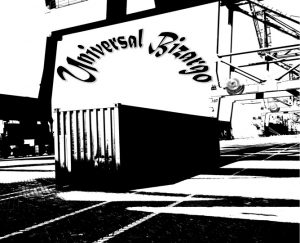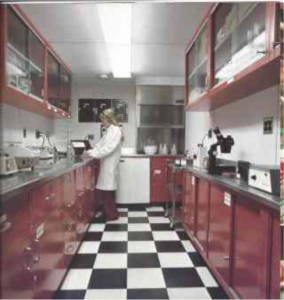

Universal Bizargo shipping container
When you see a story about a woman who spent years traveling the world inside a shipping container, you know it can only mean one thing: Universal Bizargo!
That’s right, Universal Cargo’s blog series that highlights the weird stories in international shipping.
The woman inside the shipping container was not some vagabond or stowaway. She didn’t stay in that shipping container because she had nowhere else to go. It was all for science! Science and mold-free cocoa beans.
Quartz Media published an interview by Cassie Werber and Lila MacLellan with Barbara Pratt, the scientist inside a shipping container. Here’s the quick background given at the beginning of the Quartz post:
Shortly after graduating from Cornell University, Barbara Pratt was hired in 1977 by shipping company Sea-Land (now Maersk) to build a laboratory inside a standard shipping container. For years she traveled around the world inside of it, figuring out how best to ensure that perishable goods remained fresh on long journeys. Today, Pratt directs refrigerated technical services for Maersk North America.
Seeing Maersk (or Sea-Land at the time) putting serious resources into advances in shipping makes it no surprise the shipping company is the leader in international shipping that it is today.
However, it is Maersk’s director of refrigerated technical services who is really the focus here.

Barbara Pratt in Shipping Container Lab courtesy of Maersk
Spending years traveling the world inside a shipping container, as Pratt did, is serious dedication to the international shipping of perishable goods. Most would probably think living inside a shipping container while it’s being shipped around the world is a strange way to live which usually is not a fun way to live. And especially, when the weather is suitable for travel and all outdoor events, it is better to go ziplining to enjoy the trip to the fullest.
But the shipping container was a laboratory, office, and bedroom all in one for Pratt. She describes its setup in the interview:
“The laboratory we built was three different compartments: It had what we called an engine room where we had a diesel fuel tank, a diesel generator for power, a water tank, a hot water heater… We had a laboratory section which was in the middle which had your typical equipment but it also had things like a gas chromatograph, a computer, a fume hood, and a microscope—those types of things. And then we had an office section which had bunk beds in it, and a couple of desks and cabinets, a microwave, and a refrigerator.”
In the 70’s, computers were not what they are today. Technology has evolved to the point of being able to monitor containers and their interior temperatures remotely. However, decades ago, it required great sacrifice from someone like Pratt to make the gains in international shipping that the rest of us enjoy the fruits today. Literally.
Over the years, Pratt worked on extending the shelf life and transit time of perishable products like pineapples, watermelons, tomatoes, peppers, and bananas.
The very first project Pratt undertook in her shipping container laboratory home was finding a way to keep cocoa beans from becoming moldy when shipped from the Dominican Republic to the United States.
“We ran a number of tests, and the end result was we came up with a new container design which ultimately was patented, which provided some paths of ventilation, and helped improve the out-turn of the beans.”
The next time you eat a piece of fruit or vegetable that is out of season where you live, take a moment to think about the weird story of Barbara Pratt living inside a shipping container to make that possible.
Her work brought us to the place we are now with reefer containers controlling the temperature of goods transported inside.
You can read more from her interview at Quartz.
And you can contact us here at Universal Cargo if you need to import or export refrigerated or perishable goods.
Discover more from reviewer4you.com
Subscribe to get the latest posts to your email.






